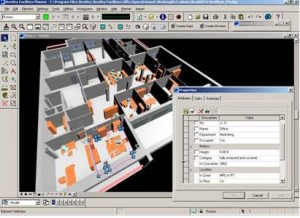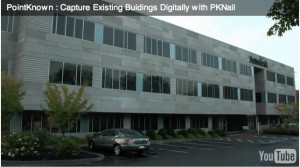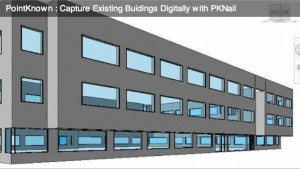Archive for category New Technologies
BIM FM Rundown
Posted by Jim Foster in BIM, Built Environment, New Technologies on October 7, 2011
 BIM, supposedly, sits at the center of managing a building from design to demolition. The longest part of that arc, facility management, seems to get the least amount of press and attention. Interestingly enough, Autodesk purchased FM Systems in in 2006 and discontinued its product FM Desktop by 2009. This seems to leave a gaping whole in their portfolio but perhaps they just wanted to build something from the ground up integrated with Revit, maybe its in the pipeline somewhere. In between, there is an excellent article on AECBytes, BIM for Facilities Management, that breaks down the current BIM FM Marketplace.
BIM, supposedly, sits at the center of managing a building from design to demolition. The longest part of that arc, facility management, seems to get the least amount of press and attention. Interestingly enough, Autodesk purchased FM Systems in in 2006 and discontinued its product FM Desktop by 2009. This seems to leave a gaping whole in their portfolio but perhaps they just wanted to build something from the ground up integrated with Revit, maybe its in the pipeline somewhere. In between, there is an excellent article on AECBytes, BIM for Facilities Management, that breaks down the current BIM FM Marketplace.
Current Players:
ArchiFM now VintoCon
Working on the live integration between BIM and BAS (Building Automation Systems)
What I don’t completely understand is the step child status of FM applications. Autodesk shed FM. ArchiCAD seems to be distancing itself from FM with the introduction/spinoff of Vintocon, maybe it just takes too much work and integration, however, according to NIBS, Whole Building Design Group, that over a 30 year life of a building, operating it costs 3x more than building it. One would think programming/implementing software to manage this process would be worth the effort, then again that’s 3x over 30 years. My feeling the more it is integrated with BAS (Building Automation Systems) which then links directly to energy usage, the more popular it will become.
“Rocket” science applied to buildings : NASA BIM
Posted by Jim Foster in BIM, New Technologies on September 26, 2011
 Excerpted from the NASA Press Release: NASA Partners with DOE to Construct ‘Greenest’ Federal Building
Excerpted from the NASA Press Release: NASA Partners with DOE to Construct ‘Greenest’ Federal Building
MOFFETT FIELD, Calif. – NASA’s Ames Research Center and the Department of Energy (DOE), at the Lawrence Berkeley National Laboratory, Berkeley, Calif. are collaborating on technologies and processes for what may be the “greenest,” highest-performing building in the federal government.
Originally developed for aerospace applications, NASA intelligent system software will be installed in the new building, called Sustainability Base, by Ames engineers. These NASA-developed control and Integrated Systems Health Management (ISHM) technologies will be an integral part of the building. To help integrate these “smart system” technologies, the Building Technologies Department at Berkeley Lab developed a Building Information Model (BIM) to serve as the repository for the building’s systems information during its life cycle. Using data from the BIM, Berkeley Lab developed an energy-performance simulation model to optimize the building’s energy operations.
For more information about Sustainability Base, please visit: http://www.nasa.gov/centers/ames/greenspace/sustainability-base.html
For more information about NASA Ames, visit: http://www.nasa.gov/ames/
For more information about Integrated Building Solutions, Inc., please visit: http://www.ibs-cal.com/
For more information about LBNL’s Building Science program visit: http://eetd.lbl.gov
PointKnown @ IBM Innovation Center : January 12th : BIM
Posted by Jim Foster in BIM, New Technologies on January 6, 2011
Okay, so pumping our own gas here a bit, need a vote for PointKnown. Put on by Mass Innovation to showcase new companies and the entrepreneurial spirit innovative companies will be at the IBM Innovation Center in Waltham; stop on by January 12th. Also will be presenting at the MIT Energy Conference later in March. You can vote for PointKnown below so you can here a 5 minute blast of what we are up to, or we’ll have a table set up so stop on by. Currently we are porting our existing beta to Revit 2011 as the API became that much beefier and could do more so will be the first release we will be supporting. Stop on by PointKnown in the next couple of weeks as the web site will be live, but hope to see those of you who are local next Wednesday.
Sketch Up vs Revit : Round 2 : Autodesk and Revit scores with Vasari
Posted by Jim Foster in 3D, Autodesk, BIM, New Technologies on November 15, 2010
Is it fair to continually compare Revit and SketchUp as essentially they were doing two different things, Conceptual Modeling as compared to Building Modeling, not anymore with the release of Project Vasari, alive and available for download. It is available as a preview and free until May 15, 2011. I will be downloading it shortly, and from the looks of it and as posted by other bloggers, like the Revit Kid and David Light here are some of the features:
- Stripped Down Revit User Interface
- Built in Energy Modeling
- Produce conceptual models using both geometric and parametric modeling functionality
- Cross Compatibility between Revit 2011 and Vasari files.
In fact, I even suggest to jump over to David’s post to get a more in depth look at Vasari and its features. However, what has been apparent to me and others was for Autodesk to round out their line up with a conceptual modeling tool, and with something that had the ease of SketchUp. Why? Because I would speak to architects who had never even fired up any CAD package who said they are now using SketchUp, plus with idea of a Revit Light you can create an easy entry point for users rather than be bamboozled by full Revit UI/Ribbon/Feature smorgasbord. In addition to the easy entry point models created in Vasari can be opened in Revit 2011 and visa-versa so going from concept to modeling in Revit Architecture should be easier, conceivably, although I have not seen that work flow.
I imagine pricing, when the free release ends, has to be somewhere within the SketchPro version which is at $495. But not sure how that would work through the VAR channel, maybe it’ll be free as an entry point or lead generation tool. SketchUp also allows you to trace photos to try and recreate real world elements, plus validation and analysis. There’s a battle going on for building design and life cycle management; makes you wonder what Google produces or buys next – a BIM authoring tool, or possibly model integration a’la Horizontal Glue. The global AEC industry is $4.6 Trillion, and if you think of buildings as customers, energy customers, retail customers, services customers, why wouldn’t you want to be a part of that. Score one for Autodesk.
PointKnown Nails It. Rapid Models Autodesk AEC HQ in Waltham: Pilot moves on.
Posted by Jim Foster in 3D, BIM, New Technologies on November 4, 2010
 So some individuals at Autodesk got to see our ‘handcrafted’ videos available at our PKLabs YouTube Channel and got in touch. Ani Deodhar, a Program Manager in their Sustainability Group, explained to me he had a mandate to come up with the best work flows across all of their product lines in order to energy model existing buildings. They have been working on geometry extraction in the labs and anyone who has seen the Photofly demos can attest, this looks very promising. However, our goal with PKNail was always to capture dimensionally correct space and do so with a minimum of software knowledge so PKNail can be leveraged across an organization rather than with a specialized few. I am not knocking any process just pointing out that if you want to move a pallet, for example, it would be nice you could just do it rather than find the guy or gal with the forklift license and then ask them to move it, and then hopefully you get it right the first time. Maybe not the best metaphor but you get it, the more people that can do something, the more of whatever ‘it’ is you can do.
So some individuals at Autodesk got to see our ‘handcrafted’ videos available at our PKLabs YouTube Channel and got in touch. Ani Deodhar, a Program Manager in their Sustainability Group, explained to me he had a mandate to come up with the best work flows across all of their product lines in order to energy model existing buildings. They have been working on geometry extraction in the labs and anyone who has seen the Photofly demos can attest, this looks very promising. However, our goal with PKNail was always to capture dimensionally correct space and do so with a minimum of software knowledge so PKNail can be leveraged across an organization rather than with a specialized few. I am not knocking any process just pointing out that if you want to move a pallet, for example, it would be nice you could just do it rather than find the guy or gal with the forklift license and then ask them to move it, and then hopefully you get it right the first time. Maybe not the best metaphor but you get it, the more people that can do something, the more of whatever ‘it’ is you can do.
 On site at Autodesk Waltham and using PKNail we were able to survey, measure, build in real time the shell of the building in Revit in less than 3 hours. Then depending on what level of detail, and features you want in the deliverable you may want to spend sometime in the office. However, when we left we knew we had all the key dimensions and information and the model itself was built. This was done at a level needed for energy modeling and we only modeled from the exterior but PKNail allows you to create interior layouts, floor by floor as needed as well. It was then ported through Revit CEA to create an energy analysis of the building.
On site at Autodesk Waltham and using PKNail we were able to survey, measure, build in real time the shell of the building in Revit in less than 3 hours. Then depending on what level of detail, and features you want in the deliverable you may want to spend sometime in the office. However, when we left we knew we had all the key dimensions and information and the model itself was built. This was done at a level needed for energy modeling and we only modeled from the exterior but PKNail allows you to create interior layouts, floor by floor as needed as well. It was then ported through Revit CEA to create an energy analysis of the building.
When creating PKNail we wanted to make things easier on ourselves. The product grew organically from our architectural surveying business. When you’ve repeated the same task enough times, or if you missed a crucial step or measurement that would require you to back to the field, etc. you think there must be a better way. Just like when you make the jump from 2D to 3D you thought, there must be a better way to communicate with my clients, coordinate views, coordinate disciplines, and here it is. Revit is increasingly becoming that better way. Use it however you want, it’s a tool, you can use it communicate visually with your clients if that’s what you need it for or use it to coordinate construction; your choice but it helps. PKNail allows you to quickly and accurately capture existing buildings digitally, either just the exterior for energy modeling or to start your as-built documentation.
On a recent conference call to discuss our pilot with Autodesk, one of the attendees said something like this:
“So you simplified the GUI to automate the tasks you need when surveying and allowed for the wireless capture of data to minimize key stroking”
Well, I don’t know if I would say it exactly like that, but yeah, that’s what we did, and I added that we created a workflow and process that squeezes the surveying knowledge of our organization into the software so people can be a success right out of the box. We wanted to take something simple, point and shoot distance meters, very simple and marry it with something that can be infinitely complex, 3D BIM authoring tools as in Revit, and in turn try to make that simple. Measure a wall/build a wall, window, levels, etc. We call this PPLT (Point to Point Laser Technology). So until we got robots doing this stuff we can never take away the human element from what we do, and so, let’s make just make it easier, faster, better, much like the $6 million dollar man.
Energy Audit Army is Well Funded and on the March : Firms Starting and Accelerating like a 16 year Old with Porsche
Posted by Jim Foster in BIM, Energy Analysis, New Technologies on November 1, 2010
 No sooner had I posted on Green BIM, and also flogging the sustainable retrofit business model, that friends and colleagues start bringing up firms specializing in energy audits. Most of these firms combine the audits with consulting to provide sustainability options i.e. savings through energy efficiency. The more you dig you’ll see that energy audits are becoming common place and even mandatory in places. The Green Energy Act passed in Ontario, Canada mandates a seller preform and energy audit on their home. The city Austin now mandates it. You get the picture, regardless if you think it is a good practice, it is also being legislated into existence. Not only that there are rebates and tax credits available for implementing retrofits. Good business. So let me again hammer this home in bullet point format:
No sooner had I posted on Green BIM, and also flogging the sustainable retrofit business model, that friends and colleagues start bringing up firms specializing in energy audits. Most of these firms combine the audits with consulting to provide sustainability options i.e. savings through energy efficiency. The more you dig you’ll see that energy audits are becoming common place and even mandatory in places. The Green Energy Act passed in Ontario, Canada mandates a seller preform and energy audit on their home. The city Austin now mandates it. You get the picture, regardless if you think it is a good practice, it is also being legislated into existence. Not only that there are rebates and tax credits available for implementing retrofits. Good business. So let me again hammer this home in bullet point format:
Give me one or a dozen at that price.
Recurve, ” a San Francisco-based provider of software and services for the home performance industry, today announced that it has secured an $8 million Series B round of financing. New investor Lowe’s Companies, Inc. (NYSE: LOW) joins existing investors RockPort Capital Partners and Shasta Ventures in the financing.” Provides not only the energy audit and recommendations and not wanting to share much pie can do the retrofits themselves as well.
Neststepliving, a Needham, MA announced this summer a “$2.6 million first close of their Series B financing round. The financing was led by local green entrepreneur John McQuillan, President & CEO of Triumvirate Environmental, who was joined by other new investors and returning Series A investors including Black Coral Capital and the Clean Energy Venture Group.”
And these are companies that people just mentioned to me in the last couple of days and as stated on the NextStepLiving website, Most Massachsuetts Homeowners are eligible for free home energy assessment and generous weatherization rebates up to 85% of the cost of the work. Regardless of who’s picking up the tab and maybe it’s just a lead generation tool, but free? Can’t lower the hurdle any more than that, and then coupled with rebates to do the work, well, get on that train.
Retroficiency , based here in Boston , “provides energy audit and energy management software and services.”
Appogee Interactive, Enercom , and Microsoft’s HOHM Beta, are all providing tools for analyzing your home. Why? It leads to business, or as my dad always says, “follow the money”. And the smart money is in sustainable retrofits and energy audits.
Web Enabled BIM : Cloud BIM : Horizontal’s BIM Glue sticks it.
Posted by Jim Foster in BIM, New Technologies on October 28, 2010
 While catching up with a friend today he mentions that he saw a demo recently of something that blew the doors off current file exchange, investigating a BIM model and coordinating file types. He said that working with it over the web is faster than working with a model on his desktop, he said this stuff is the pudding, okay he didn’t say pudding but he said this stuff is the future. You can take a look at their web site, and request a demo at Horizontal. It’s called Glue. Now I mentioned in previous posts that I believe the building is the OS (operating system) and once it is digitized, like Dr. Seuss would say, oh the things that you could do.
While catching up with a friend today he mentions that he saw a demo recently of something that blew the doors off current file exchange, investigating a BIM model and coordinating file types. He said that working with it over the web is faster than working with a model on his desktop, he said this stuff is the pudding, okay he didn’t say pudding but he said this stuff is the future. You can take a look at their web site, and request a demo at Horizontal. It’s called Glue. Now I mentioned in previous posts that I believe the building is the OS (operating system) and once it is digitized, like Dr. Seuss would say, oh the things that you could do.
On the face it, Glue is providing the the platform, and wants you to manage all phases on their platform, estimating, scheduling, collaborating and if they are making it easy, watch out. The number one constant complaint from building professionals is the amount of software, its complexity and lack of interoperability, if Horizontal has put a bow around this it’s going to be a hit. The fact that it is streaming over the web, cloud based, SaaS madness which reduces IT investment overall and simplifies deployment the sales calls should be pretty simple.
Cisco BIM : Building Information Management : Smart City
Posted by Jim Foster in BIM, New Technologies, Smart Building on September 29, 2010
“The city is built from the ground up with the fabric of using technology,” reports Roger Cheng in the Wall Street Journal Today about Cisco’s efforts in Incheon, Korea. It was also reported in Fast Company back in May However, beyond enabling cities with Cisco branded gear, Flip Video Cameras, On-Line meeting via Web Ex, networking and storage:
“the project is Cisco’s most ambitious push to get into the business of building ‘smart cities’ a market that the company expects could be worth over $12 billion in three years.’ ‘The core concept is of a connected city with a very big data center, which is the brains of the city,’ said T.Y. Lau, an analyst at research firm Canalysis.
Both articles paint the Smart City concept in broad strokes and even looking at a white paper/strategy doc from Cisco themselves provides no more insight than “Cisco’s Cool! and so are Smart Cities.” In fact, the paper itself begs the question, who the hell is in charge of the Cisco Marketing and/or Corporate Communication department. Ummn, I’m the mayor of a city and your telling me that, ‘Convergence acts as a disrupting agent for traditional site and building designs, uses, and operations, helping transform physical space into service offerings.’ Like sign me up.
Sadly, though, I get it and I’ve mentioned it before, the building is the operating system and when you have it digitally there is an abundance of ways you can make it run smarter, more efficiently, greener and save you money. For example, motion sensors can determine the relative population of any one floor, room, etc, turning on/off lights adjusting HVAC loads in real time. Or determining at any one time that only 60% of your employees are in the office, allowing you reduce the square footage you lease, however your flexible ‘smart’ work space allows an employee anywhere to sit down and have their desktop, files, phone extension, etc. ported to whatever cubicle, workstation, desk, nook and cranny they happen to be in at the moment. Okay, that’s cool, so say that.
In 2009 this article in Green Biz showed them mostly in their wheelhouse and partnering with IBM.
But what is most interesting to me is that in the same paper, while amusing in techno/biz jargon, has effectively the same building life cycle chart that any purveyor of software to the AECOM community is well aware of, so Cisco is ready to be your partner through Design to Demolition. How is Cisco going to be your partner, as a vendor who wants you to spec their products into your design like a window assembly? As a software partner? Services partner? How far are they reaching into the $4 trillion dollar construction industry and the world’s biggest asset class, buildings? They got the pockets and have never been afraid to buy instead of make.
Below if you care to either chuckle or possibly pass out face forward and drool on your desk is an excerpt from a Cisco Smart City Document.
Cisco® Smart+Connected Real Estate solutions converge building, safety, and communications networks onto the open Internet Protocol (IP) standard, streamlining processes by providing a single connection for building management and IT systems. Convergence acts as a disrupting agent for traditional site and building designs, uses, and operations, helping transform physical space into service offerings. The network forms the foundation for an intelligent building infrastructure that adds value to every kind of real estate project.
Cisco Smart+Connected Real Estate benefits all stakeholders in the design, construction, and real estate industries as well as those using the final built environment. The network becomes an “intelligent platform” infrastructure that creates an unprecedented opportunity for improved services, enhanced processes, and cost-effective operations for everyone who uses or creates real estate.
AEC Apps for the IPad and IPhone : Dead simple UI will continue to accelerate its adoption
Posted by Jim Foster in New Technologies on September 15, 2010
 This “best of ” list was just brought to my attention and it was put together by Houston Neal at Software advice. It’s a round up of AEC apps available for the i gadgets. The post brings together the best, but they also posted a google doc to exhaustively list those out there. While it was tough for me ever to imagine anyone wanting to do much content creation on the iphone, let alone deciphering floorplans, etc. the ipad is a whole different story, built in 3G out of the box can enable a whole world of construction coordination coupled with Joe Six Pack easy to use interface, well you got something. And while not wanting to sound like a shill for Apple I’ve seen a 3 year old zip through their menus, find what he wants and start his favorite cartoon so if you think this thing isn’t a game changer, change your game.
This “best of ” list was just brought to my attention and it was put together by Houston Neal at Software advice. It’s a round up of AEC apps available for the i gadgets. The post brings together the best, but they also posted a google doc to exhaustively list those out there. While it was tough for me ever to imagine anyone wanting to do much content creation on the iphone, let alone deciphering floorplans, etc. the ipad is a whole different story, built in 3G out of the box can enable a whole world of construction coordination coupled with Joe Six Pack easy to use interface, well you got something. And while not wanting to sound like a shill for Apple I’ve seen a 3 year old zip through their menus, find what he wants and start his favorite cartoon so if you think this thing isn’t a game changer, change your game.
More firms entering the PointCloud from Photo Biz: Areoscan to launch shortly
Posted by Jim Foster in 3D, Built Environment, New Technologies on September 7, 2010
While Autodesk labs has already made Photofly available for free over the web another competitor has thrown their hat into the PointCloud from Photos ring, Areoscan , and I have to say they are playing a game of catch up with Autodesk, who I believe already has a pretty good reseller network and did I mention Photofly is currently free. Add to this battle that Autodesk most will likely have the functionality built into the next AutoCAD release and its a big hill they are starting to climb. So I can’t say if there will anything new or compelling in order to pay for the service, unless they are going to fly you to their HQ in New Zealand for a personal demo. And don’t get me wrong I am always rooting for new companies but right now cannot see how the services between Photofly and Areoscan differ, except Photofly is free and Areoscan is more difficult to pronounce.



